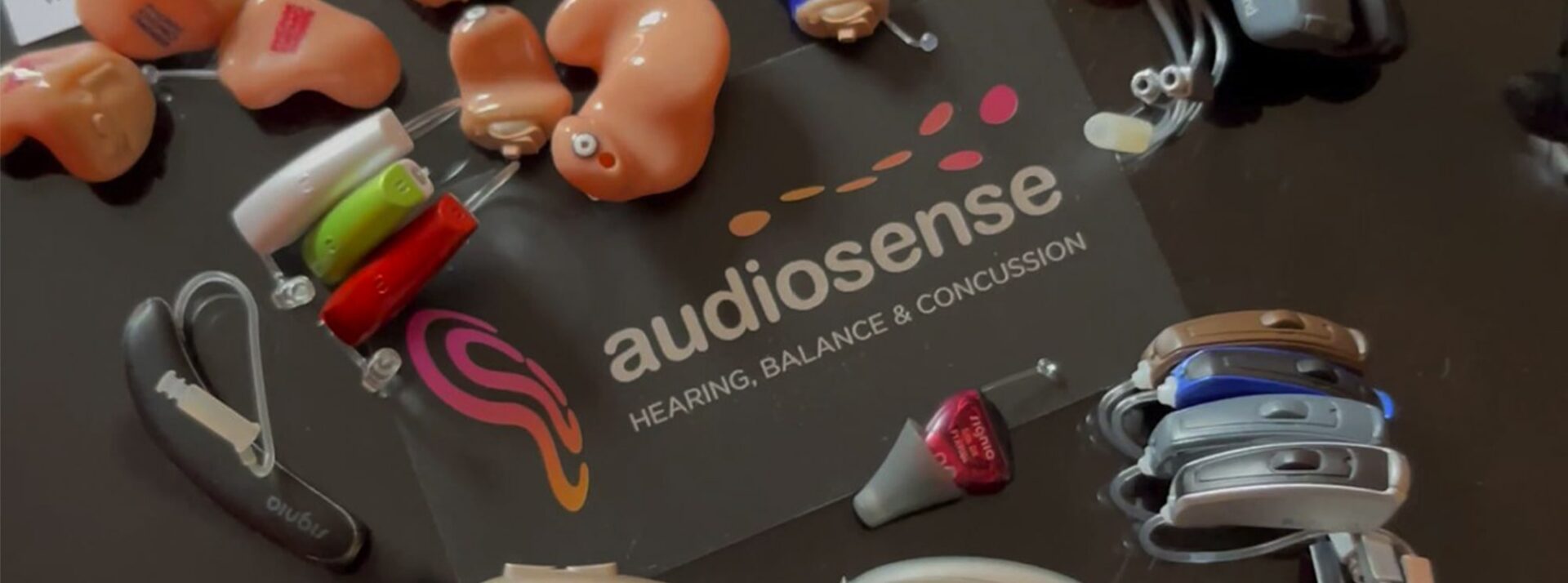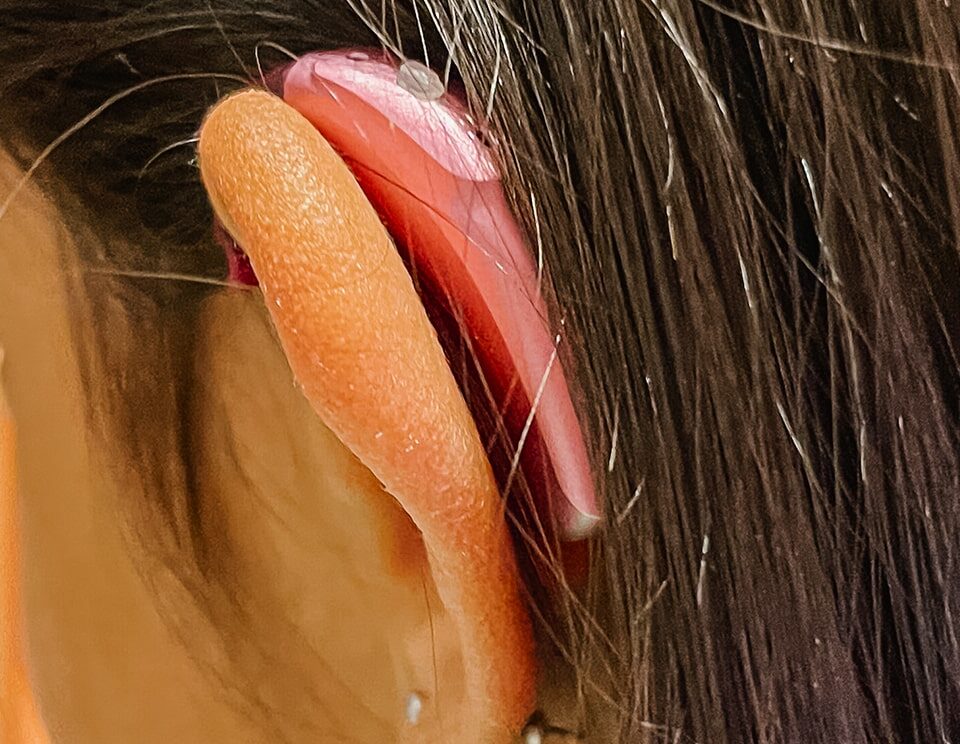In today’s hearing aids market, there is a wide variety of hearing aids, in terms of manufacturer, style, and technology level. Determining the appropriate hearing aid will depend on the severity of your hearing loss, but also your lifestyle and expectations. Below is a summary of each hearing aid style.
Keep reading.
– Invisible-in-Canal (IIC). The IIC is a custom-made hearing device that is worn fully inside the ear canal, making it practically invisible when you wear it. It is an ideal option for individuals with mild hearing loss, who are not looking to bring any attention to their hearing disability. However, this type of hearing aid might not be a suitable option for some patients because of their specific hearing loss, their ear canal’s size and the amount of wax they release. One of the most important things with this style of hearing aid is ear hygiene. It is also important to consider that since the IIC is so small, it is powered by a battery that is also extremely small. This means the battery life will likely last for only about 3-5 days. It’s recommended that you consult an Audiologist to determine whether this is the right style for you.
– Completely-in-Canal (CIC). A CIC hearing aid is also a custom-made hearing device specially designed to fit the shape and size of the user’s ear canal. It is slightly larger than the IIC style, making it appropriate for mild to moderate hearing losses. However, similar to the IIC style, it is more likely to accumulate earwax, which may clog the speaker, and is also powered by a small battery that will last approximately 3-5 days.
– In-the-Ear (ITE) or In-the-Canal (ITC). An in-the-canal hearing aid is a custom-made hearing device specially designed to fit the user’s ear. However, it is larger in size and it is more visible on the outside, but this makes it easier to operate than with the smaller traditional types of hearing aids. Since this style of hearing aid is larger in size, that leaves more space for additional features that might not be available in the IIC or CIC styles, such as Bluetooth, rechargeability, and more power for more severe hearing losses. It’s usually best suited for people who might have difficulties inserting the over-the-ear hearing aids or changing small batteries, for example, patients struggling with arthritis in their fingers. This style of hearing aid may also come with a full shell hearing aid, commonly called – In the Ear hearing aid (ITE), which fills up the user’s ear cavity. These hearing aid styles come in both a battery option that lasts between 5 to 7 years, or a rechargeable option.
– Behind-the-Ear (BTE). This style of hearing aid involves a piece that sits on top of the ear, with a tube attached to an ear mould that is custom-made for the ear. Although conventional models were relatively larger, more recent designs are thinner and less bulky. This style of hearing aid is flexible for all degrees of hearing loss, and is especially recommended for severe to profound losses. It is also the style most suitable for children, since the ear mould can be remade as the ears grow.
– Receiver-in-Canal (RIC). The receiver-in-canal (RIC) hearing aid, or receiver-in-the-ear (RITE), is the most popular style of hearing aid. It is also the most versatile, as it is suitable for all degrees of hearing loss, from mild to severe. It also includes features like Bluetooth and rechargeability. You can wear this style of hearing aid with a small tip, called a dome, or with a custom-made ear mould, that sits in the ear canal. It is much smaller and thinner than a BTE, with a small piece that sits on top of the ear and a thin wire that connects to the ear-tip inside the ear canal. The thin wire can be easily changed by the Audiologist for more power, in the event that your hearing declines in the future and you require more volume to meet your hearing prescription.
Choosing Hearing Aids
Is this your first encounter with hearing aids? Perhaps you’re in the process of buying new ones? Either way, it’s vital to get a device that best suits your:
- Listening needs
- Level of hearing loss
- Abilities to operate the device and be independent with it
- Lifestyle and aesthetic interests
Because most devices come in various colors, sizes, and finishes that generally complement a range of skin and hair tones, you have a lot to choose from. An Audiologist can help you choose the most appropriate hearing aids for you depending on a range of factors, including:
Severity of Hearing Loss & Tinnitus – It is important to choose a hearing aid that is suitable for your degree, or severity, of hearing loss. If you also suffer from tinnitus, you might need to consider a device that has built-in tinnitus programs or tinnitus management systems. Ask your Audiologist about what hearing aid would be able to help you manage your symptoms of tinnitus.
Ambient Noise Exposure – It is important to discuss your lifestyle with your Audiologist, to best choose a hearing aid that will meet the needs of your listening environments. For example, if you are primarily in quiet environments and do not find yourself in group situations often, you might not need advanced noise-reduction technology. If you live a more active lifestyle, with a variety of different listening situations and levels of background noise, then you might benefit from more sophisticated technology to handle noisier environments.
Key Listening Moments – Typically, your key listening moments rely on the specific activity you spend the most time on. For instance, do you often participate in large public speaking events? Do you work at a construction site? Are you working in a music-related field? Perhaps you actively participate in a particular sport or outdoor activity? Choosing a device that can provide you with the best level of support when it comes to your key listening moments is essential for your success. It is important to have this discussion with your Audiologist.
Device Management – Are you looking for a hearing aid that’s easy-to-control and versatile? Some advanced models come with smartphone connectivity and even have Apps to give you additional user-controls. These Apps enable you to customize your listening experience and adjust your device settings.
Direct Audio Streaming – Perhaps you’re a TV buff or an avid smartphone user who prefers to stream videos or music directly to your hearing aids? Certain modern hearing aids provide you with Bluetooth connectivity, which allows you to connect to your phones, tablets, or laptops directly.
Where Can You Get Hearing Aids?
Once you visit the Ontario government’s official website and navigate to the Health and Wellness section, you’ll find a comprehensive list of vendors who are selling hearing aids. Our clinic, AudioSense, is one of these vendors. With a dedicated audiology clinic and a well-trained team of hearing health experts, we provide Tinnitus consultations, Hearing Tests, as well as a huge variety of hearing aids for purchase. In addition, since we’re also an independent clinic, we have access to numerous mainstream hearing aid suppliers.
Apart from being a friendly, patient-centered and medical-based clinic, we also offer:
- A holistic approach when it comes to hearing health.
- Free hearing aid demos to experience for patients to wear in-clinic or at home.
- A trial period on all hearing aids after purchasing.
- We have two full-time Audiologists on staff, and typically can accommodate appointments within 2-3 business days – sometimes even same-day appointments can be arranged.
- Discounted prices and other attractive, cost-effective funding and payment choices on many hearing aid models and brands.
We are a clinic of choice for Health Professionals, Specialists, and Physicians who often refer their patients to us for hearing aids and hearing tests. Although you don’t need a doctor’s referral to schedule an appointment, we accept them. In addition, all our services are available for individuals who have bought their hearing aids elsewhere and are looking for 2nd opinion!
Please consider AudioSense Hearing, Balance, & Concussion for your hearing healthcare needs. Our team would be more than happy to assist you. We look forward to “hearing” from you soon!
About the Author
Salima Jiwani is the Founder/Director and Lead Audiologist at AudioSense Hearing, Balance & Concussion, an audiology clinic in Yorkville, Toronto. Salima has a keen clinical and research interest in disorders of the external, middle and inner ear, including hearing loss, auditory processing difficulties, tinnitus, sound sensitivities and post-concussion auditory deficits. Salima is passionate about understanding how the brain responds to sound after injury and in post-surgical management of cochlear implants. Salima works with children and adults of all ages at AudioSense, and provides her patients with industry-leading audiological care by leveraging her clinical, research and industry experience. She firmly believes in a holistic cross-collaborative team approach to audiological care and is always looking for outside-the-box evidence-based innovative ways to offer care to her patients. Outside of work, Salima continues to be engaged in advocacy initiatives to elevate the profession of audiology, give audiologists a voice and promote optimal audiological care for her patients.






